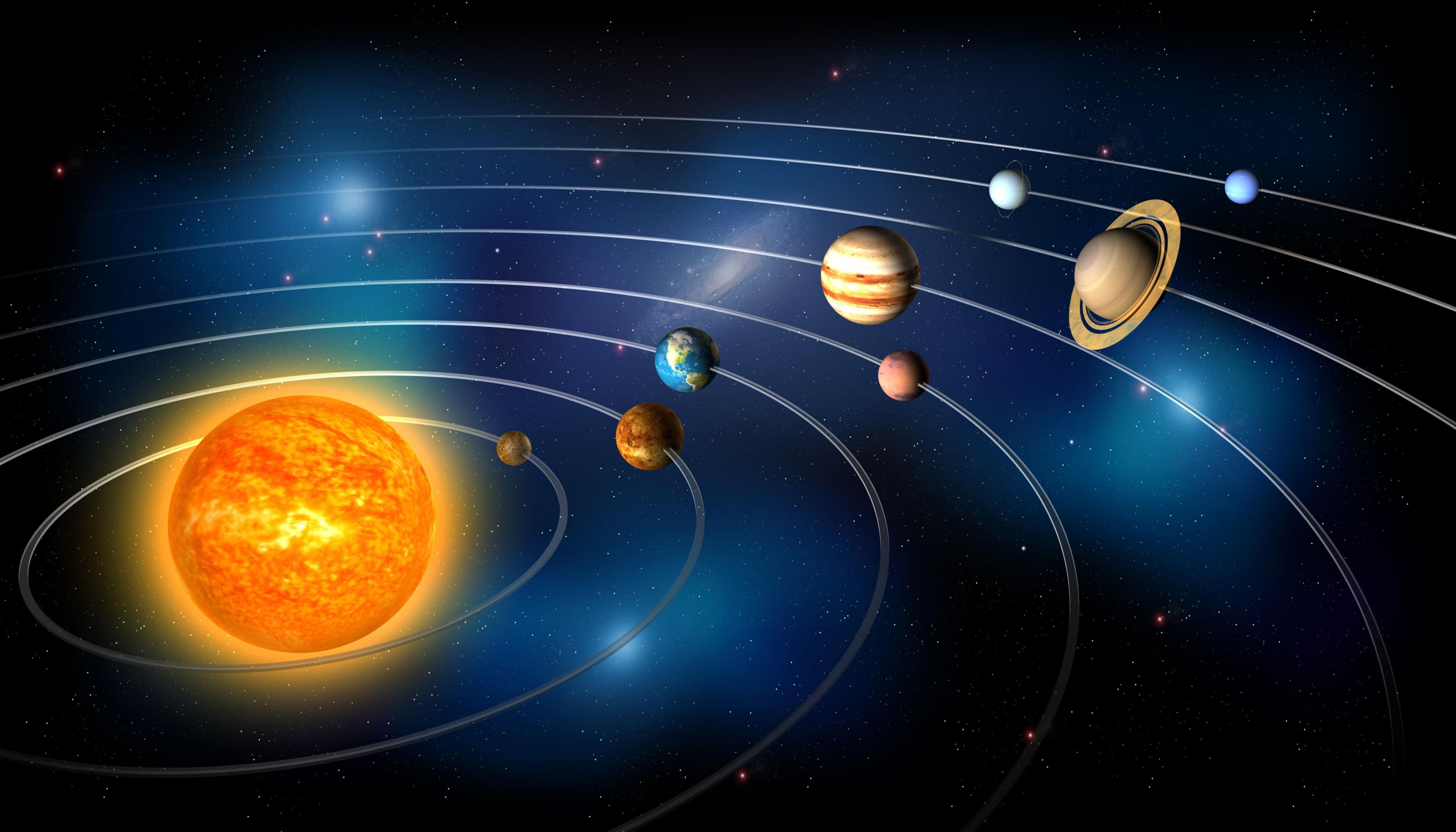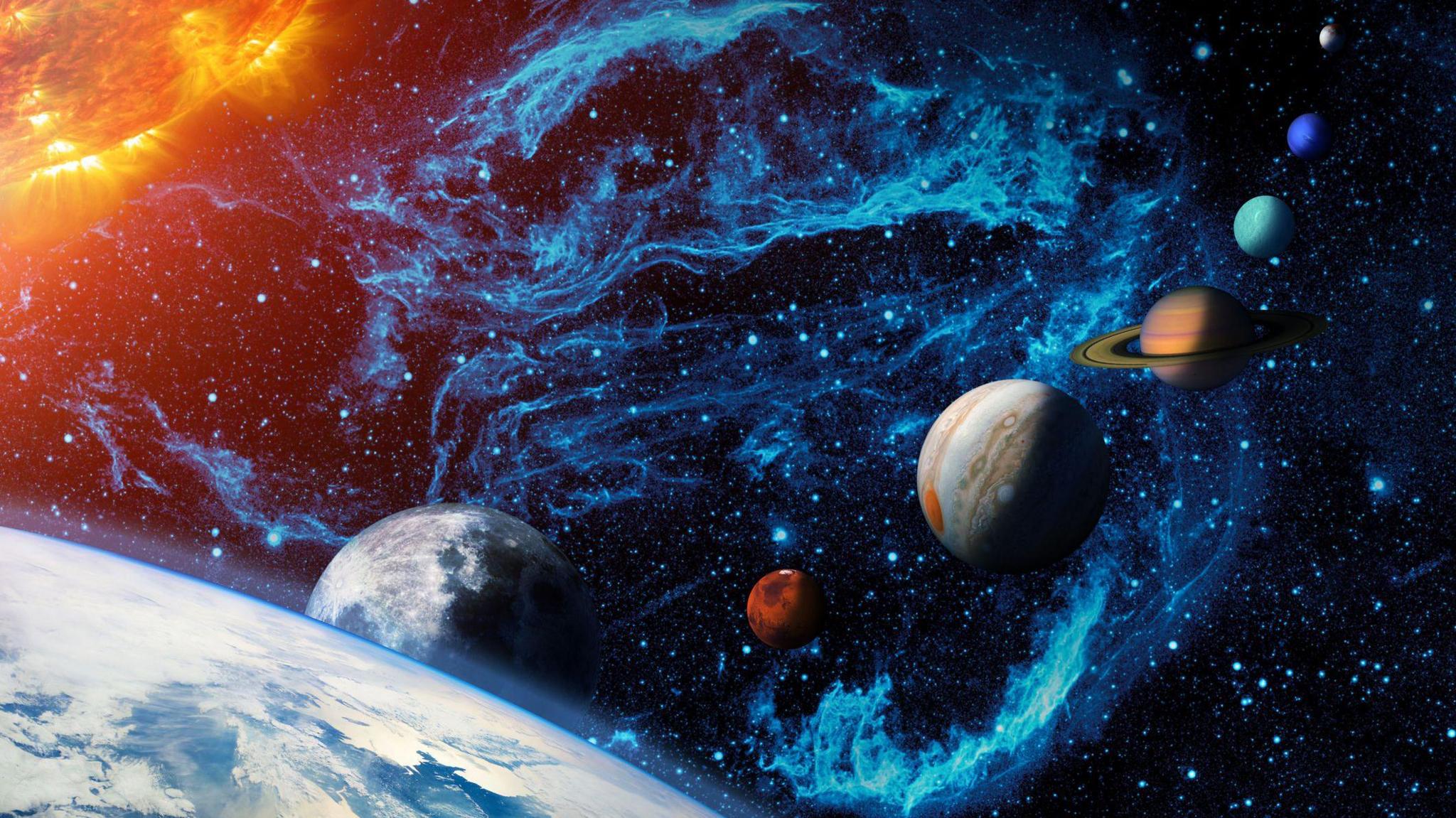Planetary parade: What is it and how can you see it?

Seven planets will line up in a planetary parade this month
- Published
Seven planets in our solar system - Mars, Jupiter, Uranus, Venus, Neptune, Mercury and Saturn - will be visible in the night sky this week.
Known as a a planetary parade, the pheno is rare, and incredibly it won’t happen again with seven planets line up, until 2040!
But when will it happen? And how can you spot it?
Read our guide below to find out what you need to know.
When is the best time to watch the stars?
- Published7 April 2021
Planetary parade 2025: Six planets line up across night sky
- Published25 January
Space 2025: What are the big events to look out for?
- Published21 December 2024
What is a planetary parade?

A planetary parade is a rare phenomenon
Planetary parades happen when the planets in our solar system appear to line up in the sky from the Earth's perspective.
Every planet orbits our Sun, which is the centre of our solar system.
They each take different amounts of time to orbit the Sun.
For example, the Earth takes 365 days to complete one orbit, but Neptune takes 60,190 Earth days.
That's around 165 Earth years - wow!
It's fairly common for some of the planets to do this, but it's very rare for seven to appear to line up in the sky.
Facts about each of our planets:
Mercury: The closest planet to our sun, but surprisingly not the hottest
Venus: The hottest planet in our solar system
Earth: Our home planet and the only one known to support life
Mars: Known as the Red Planet because it has lots of red-coloured iron oxide on its surface
Jupiter: The largest planet in the solar system
Saturn: The second largest planet in the solar system
Uranus: The only planet that rotates on its side, and also the coldest in our solar system
Neptune: The windiest planet in our solar system
(Planets listed in order from closest to furthest from our Sun)
How can I see the planetary parade?

Not all of the planets will be visible with just your eyes, but you may be able to spot some
This planetary parade will start shortly after sunset on 28 February.
If you look up at the night's sky, you will be able to see Mars, Jupiter, Uranus, Venus, Neptune, Mercury and Saturn line up.
Though not all planets will be visible to the naked eye.
Most of the parade will look like extra bright stars, however Neptune and Uranus will require strong binoculars or a telescope to see.
However, if you can't wait until then, six of the planets are are visible in the night sky right now before Mercury joins them on 28 February to complete the parade.
Why not have a go this weekend? And let us know if you spot any!
Check out this if you want more astronomy advice:
- Published1 May 2020

